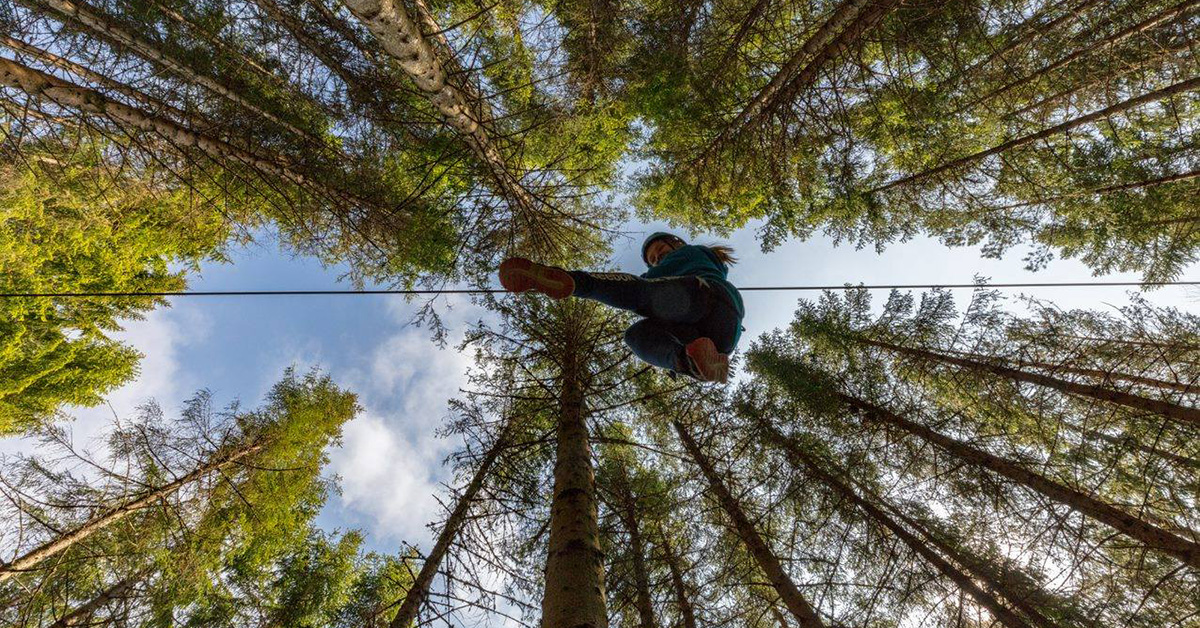
Have you ever dreamed of flying through the air like a bird, feeling the wind rush past your face as you zip across breathtaking landscapes? Ziplining offers just that exhilarating experience, but with great thrills come great responsibilities. As zipline park owners, we’re not just selling an adrenaline rush; we’re guardians of our guests’ safety. Let’s embark on a journey through the ins and outs of zipline safety, ensuring that every ride is as secure as it is thrilling.
The Anatomy of a Safe Zipline
Ever wondered what makes a zipline not just thrilling, but also secure? Let’s dissect the components that come together to create a safe ziplining experience. From the sturdy cables that support your weight to the intricate braking systems that ensure a smooth landing, every element plays a crucial role. Think of it as the behind-the-scenes magic that allows you to soar through the air with confidence. Let’s dive into the nuts and bolts of zipline safety, shall we?
The Lifeline: Understanding Zipline Mechanics
Imagine a zipline as a tightrope walker’s safety net – it needs to be taut, strong, and perfectly positioned. The mechanics of a zipline are a delicate balance of tension, gravity, and engineering prowess. Just as a guitar string needs the right tension to produce the perfect note, a zipline requires precise calibration to deliver a smooth, safe ride.
Material Matters: The Backbone of Safety
When it comes to zipline materials, we’re not talking about your grandma’s clothesline. The cables that carry thrill-seekers across canyons and through forests are made of high-grade steel, capable of supporting weights that would make Hercules break a sweat. These cables are the unsung heroes of the zipline world, silently bearing the load of countless adventures.
Safety Standards: The Rules of the Sky
Just as pilots follow strict aviation regulations, zipline operators adhere to a set of crucial safety standards. These aren’t just arbitrary rules; they’re the invisible guardians that keep thrill-seekers safe as they soar through the air. From rigorous engineering assessments to daily inspection rituals, these standards form the backbone of zipline safety. Let’s explore the key rules that govern the skies of the zipline world, ensuring that every flight is as secure as it is exhilarating.
Engineering Excellence: Building Trust in the Air
Before a single guest takes flight, ziplines undergo rigorous engineering assessments. It’s like putting a rocket through its paces before launch – every platform, tether, and pulley must be ready to withstand not just the expected loads but also the curveballs Mother Nature might throw our way.
Inspection Rituals: The Daily Safety Dance
Just as pilots perform pre-flight checks, zipline operators engage in daily inspections. It’s a sacred ritual, a dance of safety that ensures every component is ready to perform its high-flying duties. From dawn checks to dusk reviews, vigilance is the watchword of zipline safety.
The Human Element: Guardians of the Wire
Behind every thrilling zipline adventure stands an unsung hero – the human element. These aren’t just ordinary staff members; they’re the vigilant guardians of your safety, the masters of the wire. From rigorous training to cultivating a culture of unwavering safety, the people behind the scenes play a crucial role in ensuring your zipline experience is as secure as it is exhilarating. Let’s pull back the curtain and explore how these safety superheroes transform from everyday individuals into the backbone of zipline safety.
Training Titans: Crafting Zipline Superheroes
Behind every safe zipline experience stands a team of well-trained professionals. These aren’t just staff members; they’re safety superheroes in disguise. Through rigorous training programs, they transform from ordinary individuals into masters of harnesses, wizards of emergency response, and gurus of guest safety.
The Safety Culture: More Than Just Rules
Creating a culture of safety is like tending to a garden – it requires constant care, attention, and the right environment to flourish. In the world of ziplines, this culture is the invisible harness that supports every aspect of operations, from the way staff communicate to how they approach each task with safety at the forefront.
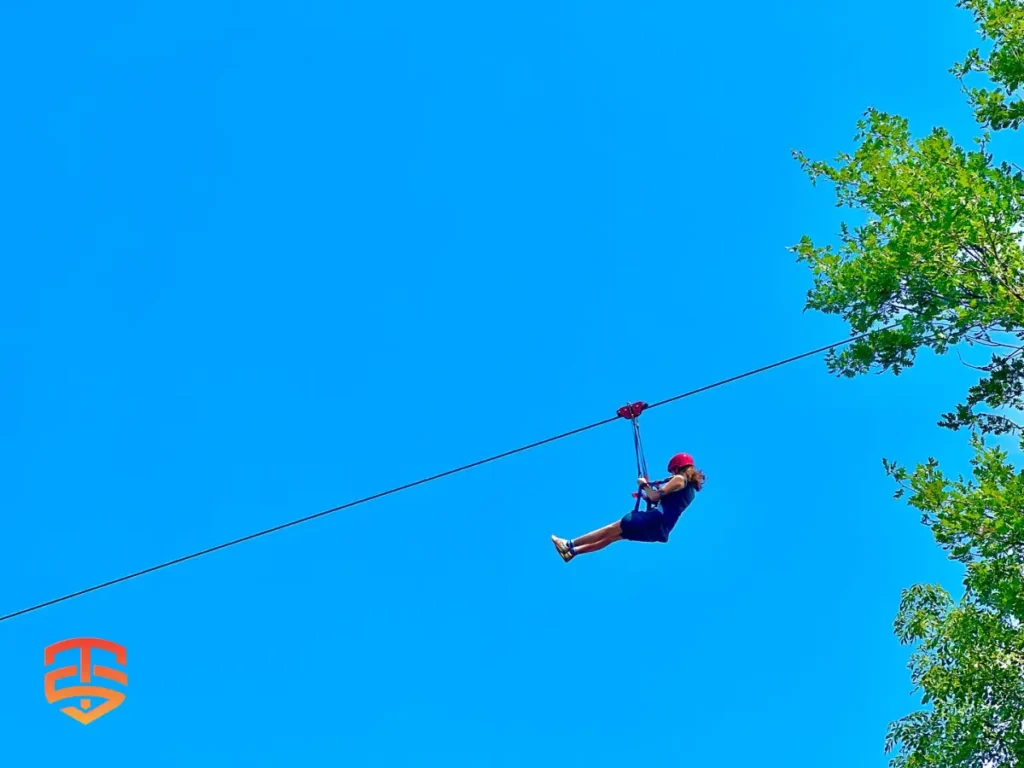
Tech Talk: Innovations in Zipline Safety
Hold onto your harnesses, folks, because we’re about to zoom into the future of zipline safety! Gone are the days of simple cables and basic brakes. Today’s ziplines are marvels of modern engineering, packed with cutting-edge technology that would make even James Bond jealous. From smart braking systems that adjust to your weight and speed to high-tech harnesses that feel like a second skin, these innovations are revolutionizing the way we fly through the air. Let’s geek out over the gadgets and gizmos that are taking zipline safety to new heights!
Braking Bad Habits: The Evolution of Stopping Power
Remember the days when stopping a zipline meant grabbing the cable with a gloved hand? Those days are as outdated as flip phones. Enter the era of high-tech braking systems. The zipSTOP Zip Line Brake, for instance, is like having a personal assistant that ensures you stop smoothly, regardless of your speed or weight.
Smart Harnesses: Your High-Tech Hug
Today’s zipline harnesses are a far cry from simple straps. They’re more like a warm, reassuring hug from technology itself. With advanced materials and designs, these harnesses distribute weight evenly and provide comfort without compromising safety. It’s like wearing a suit of armor, but one that lets you feel like you’re flying free.
Weather or Not: Nature’s Role in Zipline Safety
Mother Nature doesn’t always play nice with our high-flying adventures. When it comes to ziplining, the weather isn’t just small talk – it’s a major player in the safety game. From gusty winds that can turn a smooth ride into a wild one, to rain that transforms cables into slippery slides, the elements keep zipline operators on their toes. Let’s explore how weather conditions impact zipline safety and learn the tricks of the trade for keeping adventures thrilling, not chilling, no matter what the sky throws our way.
When Mother Nature Throws a Curveball
Ziplining isn’t just about conquering heights; it’s about dancing with the elements. Wind, rain, and even the scorching sun play crucial roles in zipline safety. Like a sailor reading the seas, zipline operators must become masters at interpreting weather patterns to ensure safe flights for all.
The Lightning Factor: When to Ground Your Flights
Lightning is the diva of weather phenomena – beautiful but dangerous. In the zipline world, it’s the ultimate show-stopper. Having a clear policy on when to shut down operations due to lightning isn’t just smart; it’s a non-negotiable aspect of zipline safety. Think of it as nature’s way of saying, “Let’s take a rain check on that adventure.”.
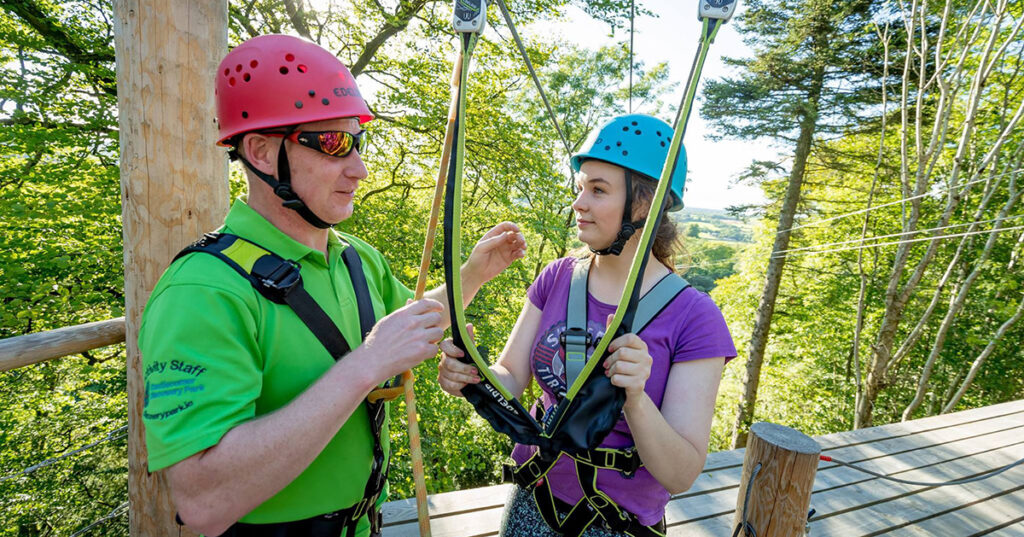
Guest Education: Empowering Safe Adventures
Knowledge is power, especially when it comes to ziplining. Guest education isn’t just a box to tick; it’s the secret sauce that transforms nervous novices into confident adventurers. By arming your guests with the right information, you’re not just ensuring their safety – you’re enhancing their entire experience. Let’s explore how to turn your safety briefings from yawn-inducing lectures into engaging, empowering sessions that set the stage for an unforgettable zipline adventure. After all, an informed guest is a safe guest, and a safe guest is a happy guest!
Safety Briefings: More Than Just Talk
Remember how your eyes glazed over during those pre-flight safety demonstrations on airplanes? Well, zipline safety briefings are nothing like that. They’re the opening act to your adventure, setting the stage for a safe and thrilling experience. It’s not just about rules; it’s about empowering guests to be active participants in their own safety.
The Power of Demonstration: Show, Don’t Just Tell
Seeing is believing, and when it comes to zipline safety, demonstration is key. Whether it’s a mini zipline for practice or a step-by-step walkthrough, showing guests what to expect and how to react in different scenarios is like giving them a safety superpower. It’s the difference between reading a manual and taking a test drive.
Emergency Preparedness: Hope for the Best, Plan for the Rest
In the world of ziplining, we always aim for blue skies and smooth sailing. But let’s face it – sometimes life throws us a curveball. That’s where emergency preparedness comes in. It’s like having an ace up your sleeve, ready for any scenario that might unfold. From rescue plans that would make action heroes jealous to drills that keep our teams sharp, we’re diving into the nitty-gritty of being ready for anything. Because when it comes to zipline safety, hoping for the best is great, but planning for the rest? That’s non-negotiable. Let’s explore how to turn potential crises into well-managed situations!
The Rescue Playbook: Scripting Safety Scenarios
In the world of ziplines, we hope for clear skies and smooth rides, but we plan for stormy weather. Having a comprehensive emergency plan is like having a well-rehearsed play – everyone knows their part, their cues, and how to improvise if needed. It’s not about expecting the worst; it’s about being ready for anything.
Drills and Skills: Practice Makes Perfect
Emergency drills might seem like a hassle, but they’re the secret sauce of zipline safety. Just as firefighters regularly practice their rescue techniques, zipline staff should be well-versed in emergency procedures. These drills are the dress rehearsals for scenarios we hope never to encounter, ensuring that if the curtain does rise on an emergency, the performance is flawless
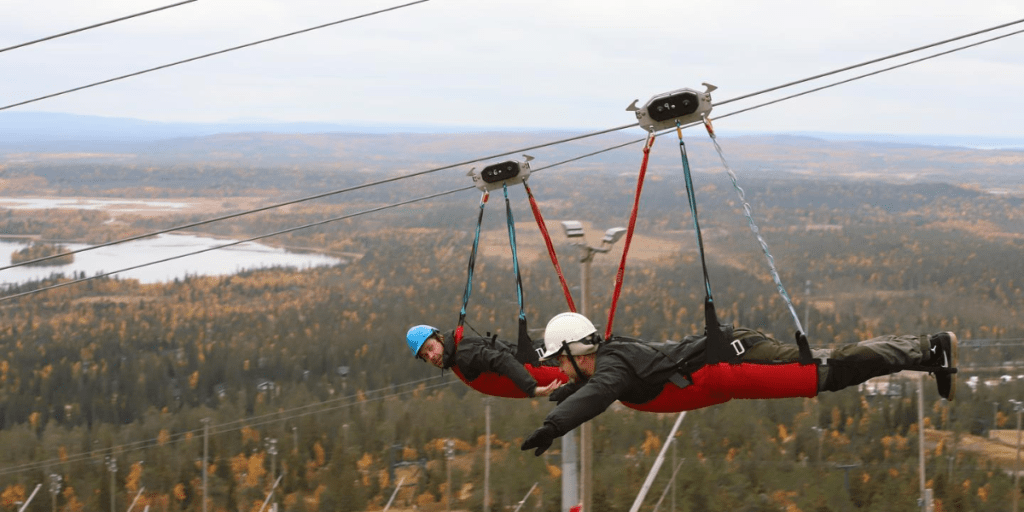
Conclusion: Zipping Towards a Safer Future
As we reach the end of our high-flying journey through zipline safety, remember that the thrill of adventure and the assurance of safety are not opposing forces – they’re partners in creating unforgettable experiences. By embracing cutting-edge technology, fostering a culture of safety, and continuously educating both staff and guests, we can ensure that every zipline ride is as safe as it is exhilarating. The future of ziplining is bright, with innovations constantly pushing the boundaries of what’s possible. As park owners, operators, and enthusiasts, it’s our collective responsibility to stay vigilant, stay informed, and always prioritize safety. After all, the best adventures are the ones we can look back on with a smile, knowing we conquered not just our fears, but did so with the utmost care for our well-being. So, the next time you clip in and prepare to soar, take a moment to appreciate the invisible web of safety measures surrounding you. It’s this dedication to safety that allows us to touch the sky, even if just for a moment, and return to earth with stories to tell and memories to cherish.
FAQs
- Q: How often should zipline cables be replaced?
A: The frequency of cable replacement depends on factors like usage, environmental conditions, and manufacturer recommendations. Generally, cables should be inspected regularly and replaced every 3-5 years or sooner if signs of wear are detected. - Q: Can children safely participate in ziplining?
A: Yes, many zipline parks offer child-friendly courses. However, there are usually age, height, and weight restrictions. Always check with the specific park for their guidelines and ensure proper safety equipment is used. - Q: What should I wear for a safe ziplining experience?
A: Wear comfortable, close-fitting clothing that won’t catch on equipment. Closed-toe shoes are a must. Avoid loose jewelry or accessories. Long hair should be tied back, and always wear the provided safety gear. - Q: How do zipline parks ensure the safety of their equipment in varying weather conditions?
A: Parks use weather-resistant materials and conduct regular inspections. Many have weather monitoring systems and clear guidelines for operation in different conditions. Equipment is often stored or covered when not in use to protect from the elements. - Q: What’s the difference between passive and active braking systems in ziplining?
A: Passive braking systems rely on gravity and the zipline’s design to slow riders, while active systems use mechanical means to control speed. Active systems, like the zipSTOP, offer more consistent and controllable braking regardless of rider weight or speed.
Beyond the Basics: Unveiling Zipline Technology with Expert Analysis
Intrigued by the potential of Zipline technology? You’ve come to the right place! This article provides a solid foundation. But if you’re eager to delve deeper and gain insights from industry experts, keep reading…
- Zip Line Design: Components for a Complete System
- Considering operating and investing in a zipline?
- 9 Zipline Mistakes You Don’t Know You’re Making
- Magnetic Zipline Braking: A Revolutionary Way to Ensure Safe Rides
- Pros and Cons of Different Zip Line Brakes
- Expert Tips for Zip Line Brake Installations
- White Paper on Zipline Emergency Arrest Devices (EAD)
- The Importance of Optimizing Zip Line Design for Rider Speed
- Does your zip line need an emergency arrest device?
- The Magnetic Self-braking Zipline pulley
- Zipline Braking and landing considerations
- Why Zip Line Trolley Bearings Matter
- Whitepaper: Zipline Braking Dynamics
- Zip Line Installation: Give them the Best Ride
- How to startup a Successful Zip Line Business
-
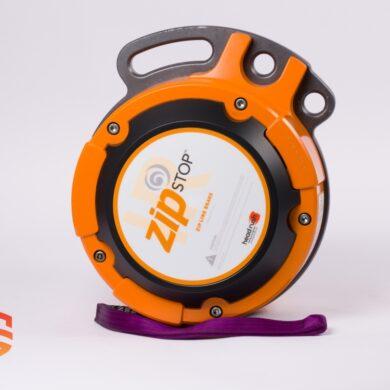 zipSTOP IR Zipline Brake | 24 – 60 kph€ 5.649,00 – € 5.799,00 Ex VAT
zipSTOP IR Zipline Brake | 24 – 60 kph€ 5.649,00 – € 5.799,00 Ex VAT -
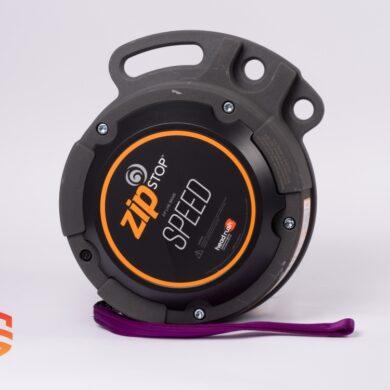 zipSTOP SPEED Zipline Brake | 50 – 72 kph€ 6.099,00 – € 6.349,00 Ex VAT
zipSTOP SPEED Zipline Brake | 50 – 72 kph€ 6.099,00 – € 6.349,00 Ex VAT -
 Spring Brake System | Primary & EAD zipline brake€ 80,00 Ex VAT
Spring Brake System | Primary & EAD zipline brake€ 80,00 Ex VAT







